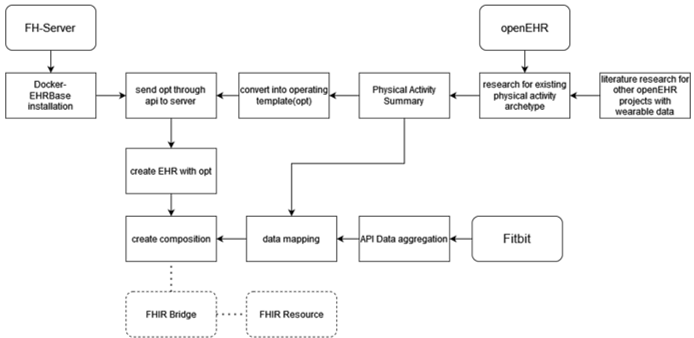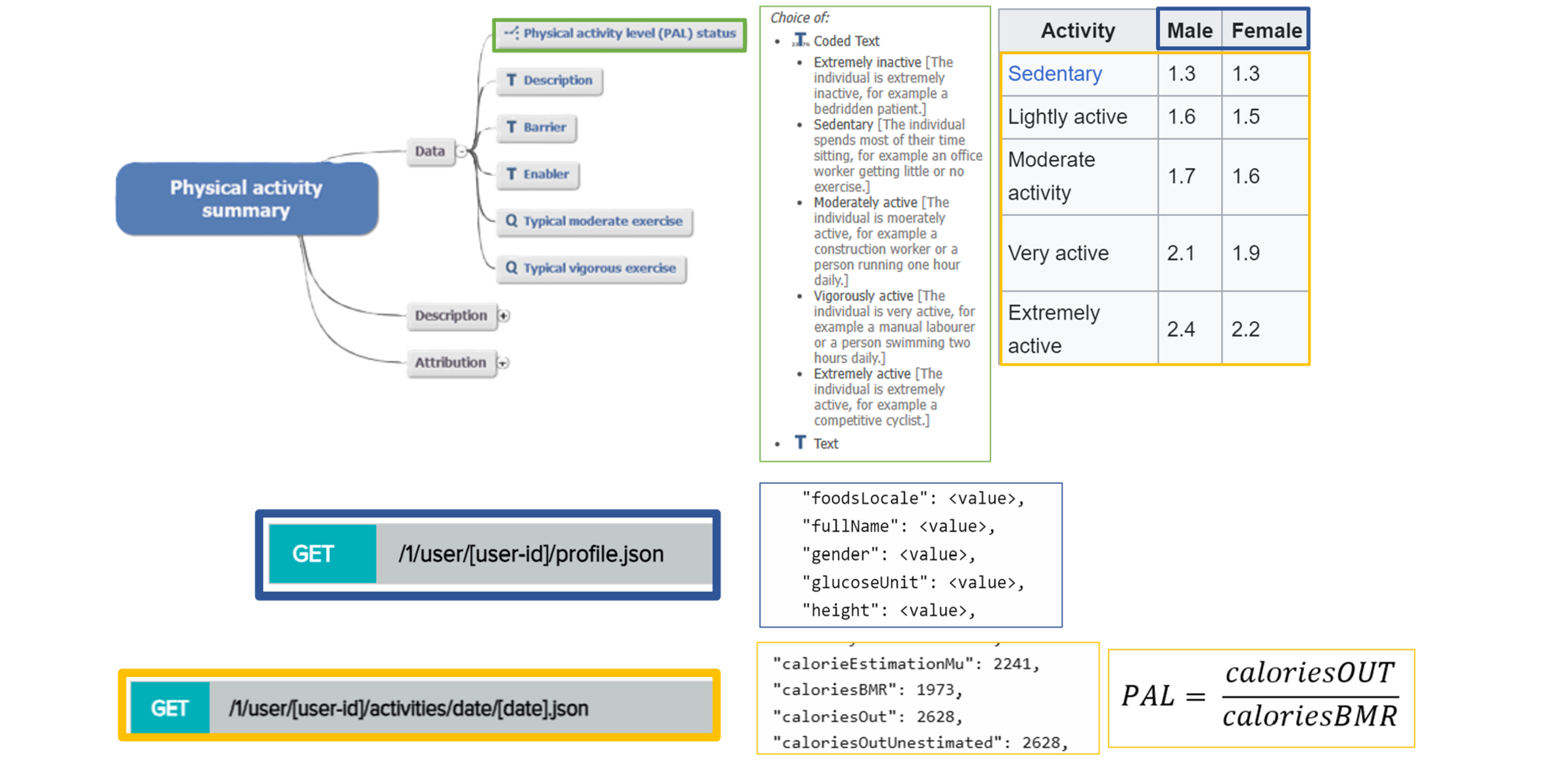FHIR is a widely used standard for storing and transmitting health data in so-called resources. A disadvantage of FHIR is that the definitions of resources are sometimes incomplete and need to be revised from time to time. openEHR may prove to be a better option for storing health data, especially in the long term. FHIR can then be used to exchange health data based on openEHR. Furthermore, it can be observed that Personal Generated Health Data (PGHD), i.e. data from wearables and apps, can only be stored very inadequately in FHIR.
Objectives
- Exemplary analysis for PGHD in how far physical activity data from personal devices can be stored in openEHR
- Recording of physical activity data with Fitbit devices and storing it in openEHR
- Implementation of the HL7 FHIR Physical Activity Implementation Guide based on an openEHR profile with Fitbit data
Results
The collected Fitbit wearable data could be incorporated into the openEHR standard in such a way that a PGHD record can be displayed. Furthermore, already existing openEHR archetypes were found that partially reflect wearable data. However, the data needs to be processed beforehand and cannot be directly incorporated. The Fitbit data could be mapped to the selected archetype. For the future, it would be advisable to create a more suitable archetype for wearable data, which could potentially be linked directly to FHIR resources.











